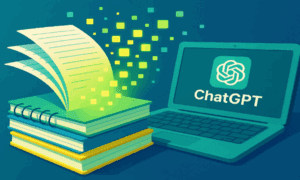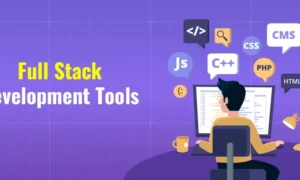Customer expectations are changing faster than ever. Whether you run a small clinic, a law firm, or a nationwide service business, one truth holds steady: missed calls equal missed opportunities. Traditional phone receptionists are helpful but expensive, and voicemail often leaves potential customers frustrated. Enter AI answering services — intelligent receptionist tools designed to answer, route, and even schedule calls automatically.
Among these new solutions, platforms like Voicei.ai are reshaping how businesses handle customer interactions, blending automation with human-like conversation capabilities. But are they really practical? And how can they fit into your business workflow? Let’s break it down.
What Are AI-Powered Receptionist Tools?
AI-powered receptionist tools use natural language processing (NLP) and machine learning to interact with customers in real time. Instead of forcing callers through clunky menus (“Press 1 for sales, Press 2 for support”), these tools allow people to speak naturally, as they would with a human receptionist.
Key features often include:
- Call answering 24/7 – Never miss a call, even outside business hours.
- Smart call routing – Direct calls to the right department or staff member.
- Appointment scheduling – Sync with calendars to book meetings automatically.
- Customer data collection – Gather names, emails, or inquiry details before transferring.
- Integration with CRMs and support tools – Keep everything organized and trackable.
The goal isn’t to replace human staff entirely but to free them from repetitive call handling so they can focus on higher-value work.
Why Businesses Are Turning to AI Answering Services
The adoption of AI answering services isn’t just a trend; it’s a necessity in an age when customers demand instant responses. Consider these statistics:
- 80% of callers won’t leave a voicemail if their call goes unanswered (Forbes).
- 67% of customers say their overall brand perception is influenced by how quickly they reach a live representative (HubSpot).
- Businesses that respond within an hour are 7x more likely to qualify a lead (Harvard Business Review).
Clearly, missing calls or leaving customers on hold costs money. AI receptionists provide an immediate, scalable solution without the high cost of round-the-clock staffing.
Real-World Example: Voicei.ai in Action
Let’s take the case of a small dental clinic that adopted Voicei.ai. Before using AI, their front desk team was overwhelmed with calls — everything from new patient inquiries to rescheduling requests.
Here’s what changed after implementation:
- Reduced call wait times by 60% – Patients no longer had to wait on hold.
- Automatic appointment booking – Voicei.ai synced with the clinic’s calendar, saving staff nearly 15 hours per week.
- Increased new patient intake – With every call answered 24/7, the clinic captured leads they would have otherwise lost.
This example shows how a small business can boost efficiency and customer satisfaction simultaneously with AI-powered receptionist tools.
How Do AI Answering Services Compare to Human Receptionists?
It’s natural to ask: “Can an AI receptionist really replace the warmth of a human voice?” The truth is nuanced.
Strengths of AI Receptionists:
- Availability – AI works 24/7, never takes breaks, and handles high call volumes.
- Cost savings – Hiring a full-time receptionist costs $35K–$45K annually, while AI subscriptions are a fraction of that.
- Consistency – AI won’t forget to take a message or mistype an email.
- Scalability – Handle 50 calls at once without needing more staff.
Limitations to Consider:
- Complex conversations – AI still struggles with highly emotional or unusual requests.
- Personal touch – Some customers still prefer speaking with a human for sensitive issues.
- Initial setup – Training AI with scripts, FAQs, and company policies takes effort.
The smartest approach? Use AI to handle routine inquiries and free human staff for more nuanced interactions.
Use Cases Across Industries
AI-powered receptionist tools are adaptable across industries. Here’s how different businesses are using them:
- Healthcare – Automating appointment scheduling, reminders, and insurance inquiries.
- Law firms – Capturing leads after-hours, routing urgent calls to attorneys.
- Real estate – Qualifying buyer/seller leads and booking showings.
- E-commerce – Handling order status calls and FAQs.
- Service businesses (plumbing, HVAC, salons) – Booking jobs instantly without missing a call.
In each case, businesses save time while ensuring customers always get an immediate response.
Voicei.ai and the Competitive Landscape
While many platforms now offer AI answering services, Voicei.ai stands out with its conversational accuracy and ease of integration. Its AI is trained to handle natural speech patterns — including pauses, hesitations, and regional accents — making it more intuitive for callers.
Other notable competitors include:
- Smith.ai – Popular for its blend of AI + live virtual receptionists.
- Numa – Focuses on text messaging and call answering for small businesses.
- Ruby – Offers live human receptionists with some automation features.
What sets Voicei.ai apart is its balance between automation and human-like engagement, making it particularly useful for small-to-mid-sized businesses that need reliability without the complexity of enterprise systems.
Overcoming Common Concerns About AI Receptionists
Many business owners hesitate to adopt AI receptionists because of misconceptions. Let’s address a few:
- “It will sound robotic.” Modern AI tools, including Voicei.ai, use advanced speech synthesis to sound natural.
- “Customers won’t trust AI.” When programmed well, customers often don’t even realize they’re speaking with AI.
- “Setup is complicated.” Most platforms provide plug-and-play integrations with calendars, CRMs, and VOIP systems.
- “It replaces jobs.” In reality, AI often complements staff by removing repetitive tasks, not replacing roles entirely.
Best Practices for Using AI Answering Services
To get the most out of AI-powered receptionist tools, follow these tips:
- Customize scripts and FAQs – Tailor responses to your brand voice.
- Integrate with existing tools – Connect to calendars, CRMs, and email for smooth workflows.
- Set escalation rules – Make sure complex calls are transferred to a human.
- Monitor performance – Use call analytics to track missed calls, conversions, and customer satisfaction.
- Update regularly – Keep your AI updated with new services, policies, and offers.
The Future of AI Receptionists
The technology is only getting smarter. Future developments in AI receptionist tools may include:
- Emotion recognition – Detecting caller frustration and escalating to a human instantly.
- Multilingual capabilities – Offering seamless translation for global businesses.
- Deeper personalization – Using customer history to tailor conversations in real time.
- Integration with generative AI – Offering more dynamic, context-aware responses.
With AI adoption growing rapidly, businesses that embrace these tools today will be better positioned to meet tomorrow’s customer expectations.
Final Thoughts
AI-powered receptionist tools like Voicei.ai are no longer futuristic experiments — they’re practical solutions driving real results. From reducing costs to improving customer satisfaction, AI answering services give businesses a powerful way to stay responsive in an always-on world.
FAQs
- What are AI answering services, and how do they work?
AI answering services are software tools that use artificial intelligence to answer phone calls, route them to the right person, or even book appointments. They rely on natural language processing (NLP) to understand caller requests and respond conversationally, similar to a human receptionist. - Can AI receptionists replace human staff completely?
Not necessarily. AI receptionists are best at handling routine tasks like answering FAQs, booking appointments, or routing calls. Human receptionists are still important for complex, sensitive, or highly personalized conversations. The best results often come from combining both. - Are AI-powered receptionist tools expensive?
Most AI receptionist platforms, including options like Voicei.ai, operate on affordable monthly subscriptions. Compared to hiring a full-time receptionist (which can cost $35,000–$45,000 annually), AI answering services are typically just a fraction of that cost. - Do customers know they are speaking to AI?
In many cases, no. Advanced tools like Voicei.ai are designed to sound natural and conversational. As long as the system is trained with accurate information, most callers won’t realize they’re speaking with AI. - How do I set up an AI receptionist for my business?
The process is straightforward: choose a provider, connect it to your phone system, customize call scripts, and integrate it with tools like calendars or CRMs. Many providers offer quick onboarding, so businesses can start using AI answering services within days.



























